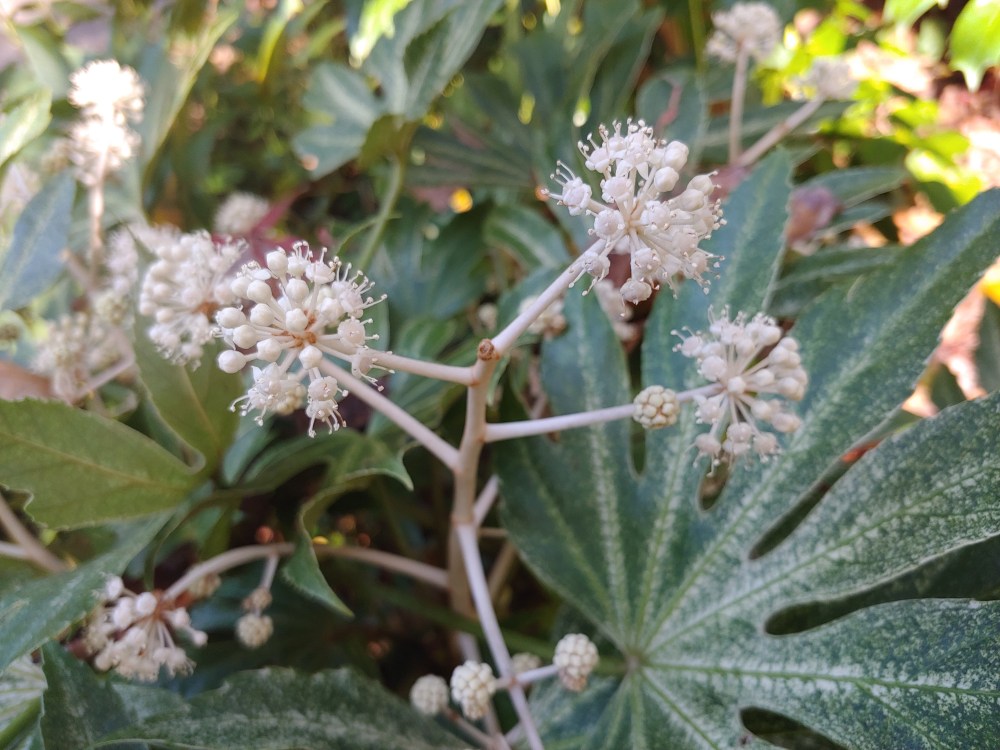A year ago was the first time I’ve grown castor bean (Ricinus communis). In damp ground that I thought at the time would be ideal, it grew only to knee high by summer’s end. With that obvious failure, my second try was planted on a bone dry slope beside the greenhouse. Happily, this one skyrocketed to at least fifteen feet in height, and now I must plant another every year.

I don’t know that the castor bean fits in with the rest of the garden, but I don’t care. It requires nothing from me except to marvel at its growth.
In this first week of November, the question is “how will it fall”? After the first drop in temperature to twenty-seven degrees the leaves wilted, and by the third freeze all were black. The trunk remains green, but I’m curious to watch as it deteriorates and finally topples over. I don’t think it’ll do any damage whichever direction it falls, and I suspect as the trunk loses rigidity it will bend before it breaks. I’ll be watching.
The castor bean did not flower, so there are no seeds for me to harvest to start next year’s plant. My son has supplied seedlings the past two years, but I think he grew only the dark leafed variety this year. If he has seedlings in the spring, I’ll figure out where to plant one, but I’ll need to purchase seeds to grow the green one.

The recent freeze ruined flowers of two ‘Spider’s Web’ fatsia (Fatsia japonica ‘Spider’s Web’, above) just as they were opening. This fatsia is surprisingly cold hardy, but only as long as we continue to have mild winters. The flowers, however, apparently do not survive a hard freeze. I have no plans to grow more from seed, so fully developed flowers for pollination are not important, but the typical flowers of the aralia family are interesting.
Castor bean is naturalized in parts of Los Angeles. I want to grow it in my own garden, but also realize that it is an invasive exotic weed elsewhere. It is not very pretty where it grows wild in Los Angeles. I know it would be prettier here.